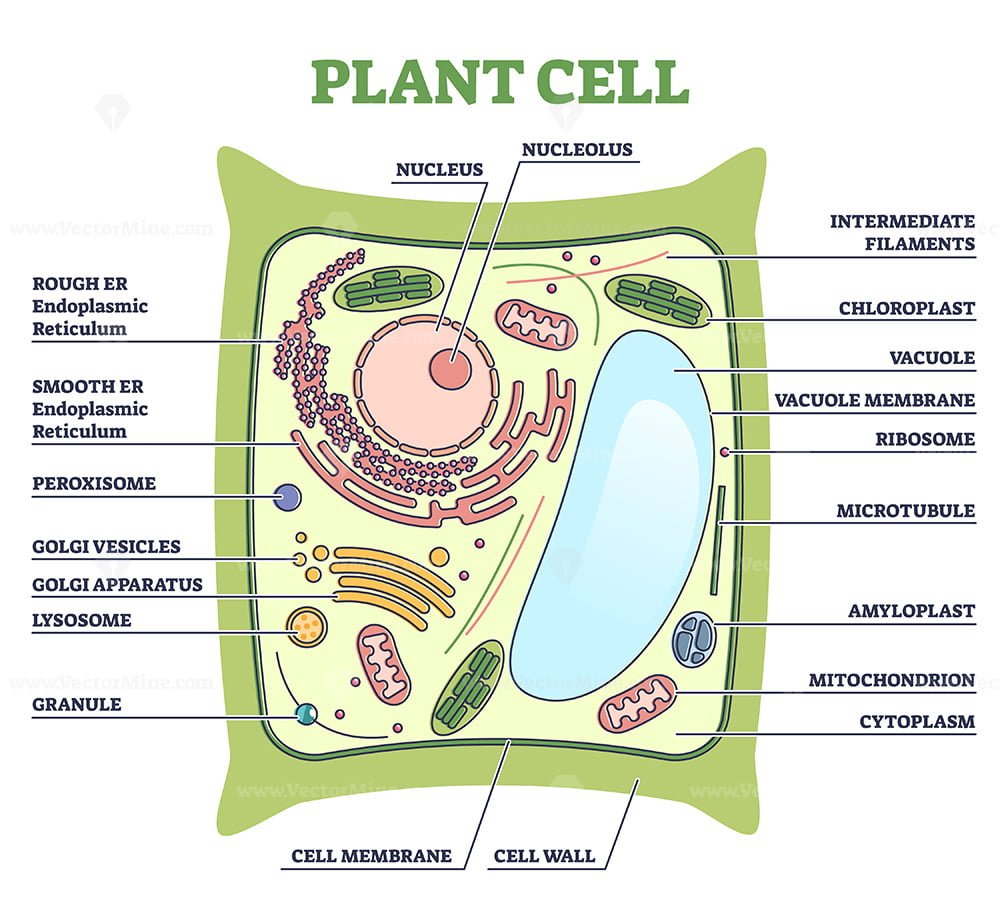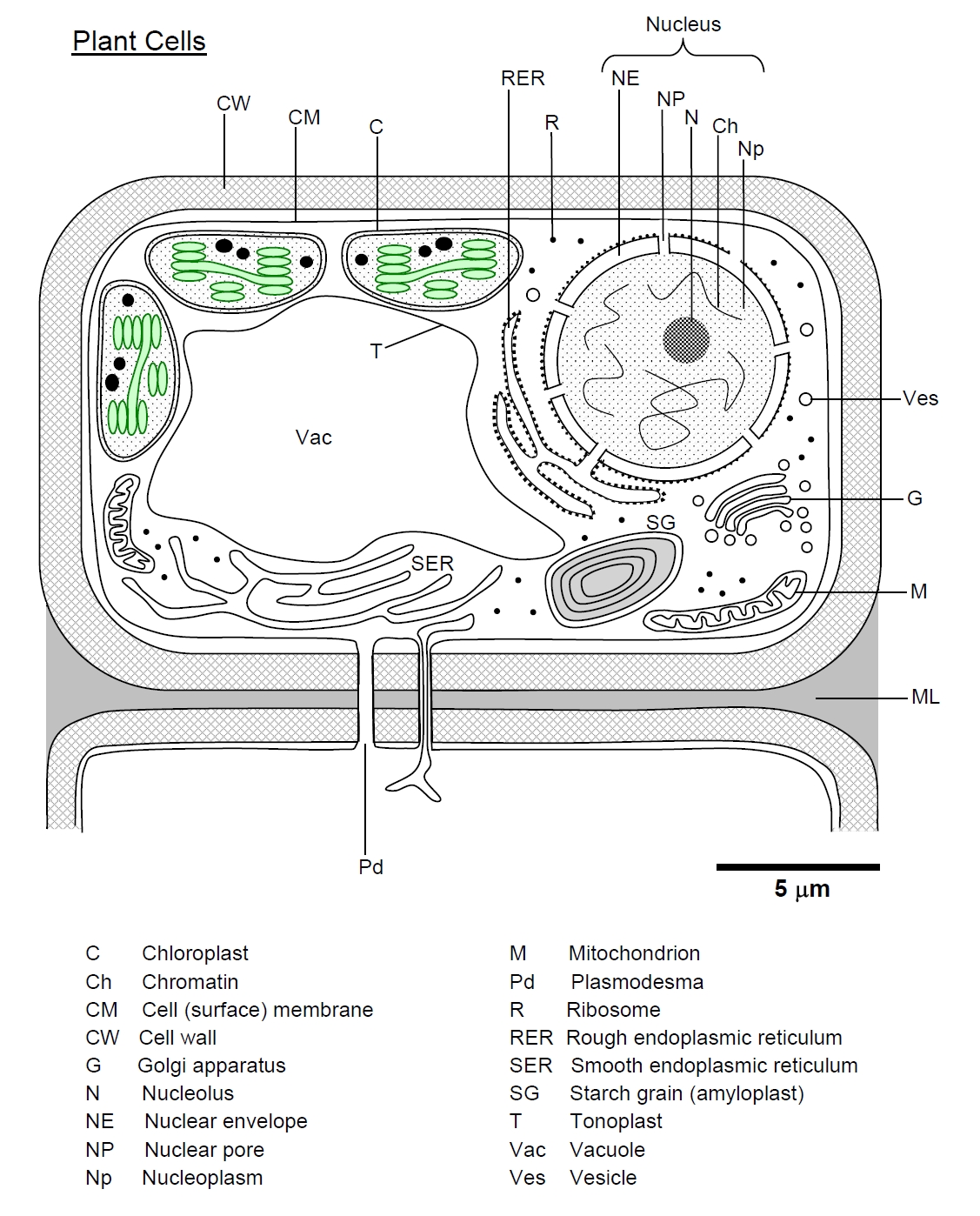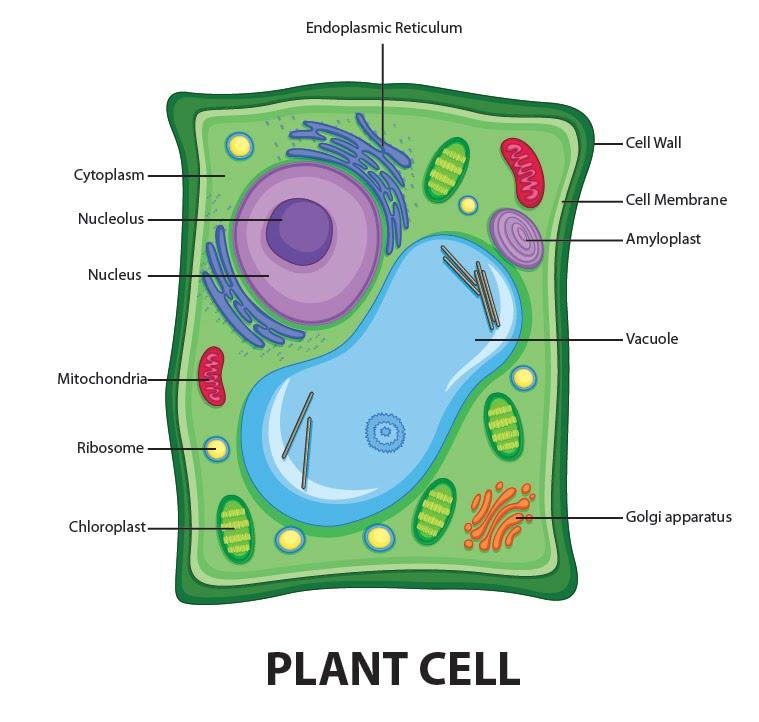
What Are All The Parts Of A Plant Cell
A Diagram of a Plant Cell Although plant cells differ greatly they all have similar eukaryotic organisation. It can be seen in this diagram of a plant cell that the cells are made up of many different parts; these are known as organelles. These are described in more detail below. Parts shown in the Plant cell diagram

Plant_Bodies_Cells
cell wall vacuole turgor See all related content → plant cell, the basic unit of all plants. Plant cells, like animal cells, are eukaryotic, meaning they have a membrane-bound nucleus and organelles. The following is a brief survey of some of the major characteristics of plant cells. For a more in-depth discussion of cells, see cell.

Plant Cell Diagram And Functions
Plant Cell Diagram 1) Cell Wall It is the outermost, protective layer of a plant cell having a thickness of 20-80 nm. Cell walls are made up of carbohydrates such as cellulose, hemicellulose, and pectin and a complex organic polymer called lignin. Functions Providing mechanical strength, support, and rigidity to the cell

Related Image Cell Diagram Plant Cell Plant Cell Diagram Gambaran
Definition: Cell membrane is a semi-permeable membrane present in the plant cell. Function: It is one of the essential organelles as it regulates the entry and exit of different substances within the cell. Structure: It is made up of a thin layer of protein and fat. Nucleus. Definition: The nucleus is a membrane-based organelle that is found in.

Anatomy of the Plant Cell vs a Human Cell Interactive Biology, with Leslie Samuel
A diagram of a plant cell with the organelles labeled The plant cell has many different features that allow it to carry out its functions. Each of these structures, called organelles, carry out a specialized role. Animal and plant cells share many common organelles, which you can find out more about by visiting the " Animal Cell " article.

Plant Cell Structure Parts Functions Types And Diagram Images
Plant cells like animal cells are eukaryotic, i.e. they contain membrane bound nuclei and cell organelles. A plant cell differs from an animal cell in having certain distinctive structures - cell wall, vacuoles, plasmodesmata and plastids. On the contrary, plant cells lack centrioles and intermediate filaments, which are present in animal cells.

Draw a welllabelled diagram of a plant cell.
Plant cells are eukaryotic cells, that are found in green plants, photosynthetic eukaryotes of the kingdom Plantae which means they have a membrane-bound nucleus. They have a variety of membrane-bound cell organelles that perform various specific functions to maintain the normal functioning of the plant cell. Table of Contents

Plant Cells Biology II
3. DNA, the heredity information of cells, which can be found in a nucleus of eukaryotic cells and the a nucleoid region of prokaryotic cell. 4. ribosomes, or protein-synthesizing structures composed of ribosomes and proteins. These structures can be found on the image of the plant cell (Figure 3.1.2.1 3.1.2. 1 ).

Plant Cell Diagram Labeled Class 9 Labeled Functions and Diagram
Plant Cell Diagram The plant cell is rectangular and comparatively larger than the animal cell. Even though plant and animal cells are eukaryotic and share a few cell organelles, plant cells are quite distinct when compared to animal cells as they perform different functions.

Plant Cell Parts ABC Worksheet
Plant Cell Structure is a topic within the cell biology and is included in A-Level Biology. This page includes a diagram of a plant cell together with notes about the parts of plant cells including organelles present in plant cells, such as mitochondria, chloroplasts and Golgi apparatus. These notes include links to further information about the structures and functions of the parts of plant.

FilePlant cell structure edit.png Wikipedia
Structure of Plant Cell (Explained With Diagram) (iii) Vacuole. The protoplasm is the living part of the cell. It is externally bounded by cell membrane or plasma membrane. The cytoplasm contains several cell organelles namely mitochondria, plastids, ribosomes, endoplasmic reticulum, lysosomes etc. (Fig. 2.1).

Diagrams of Plant Cell 101 Diagrams
Remove from My Bitesize Plant cells This basic structure of a plant cell is shown below - the same plant cell, as viewed with the light microscope, and with the transmission electron.

Plant Cell Structure Plant cell, Cell diagram, Plant cell diagram
Special Structures in Plant Cells. Most organelles are common to both animal and plant cells. However, plant cells also have features that animal cells do not have: a cell wall, a large central vacuole, and plastids such as chloroplasts.. Plants have very different lifestyles from animals, and these differences are apparent when you examine the structure of the plant cell.

Vacuole Model Bing Images Human cell diagram, Physiology, Cell biology
A plant cell is the basic building block of a plant. Plant cells, like all eukaryotic cells, contain a nucleus and other organelles, each with its distinct functions. However, plant cells also possess unique components that differentiate them from animal, fungal, and bacterial cells. Plant Cell Characteristics Plant cells are eukaryotic.

South Pontotoc Biology Plant and Animal Cell Diagrams
Types of Plant Cell: Structure, Functions, Labeled Diagram August 3, 2023 by Faith Mokobi Edited By: Sagar Aryal Plant cells are multicellular eukaryotic cells that make up a plant (a group of eukaryotes belonging to the Plantae kingdom, with the ability to synthesis their own food using water, Sunlight, and CO2).

Diagrammatic representation of a generalized plant cell depicting the... Download Scientific
A plant cell is a fundamental unit of a Plant's structure. A plant cell is a eukaryotic cell, i.e., it has a defined nucleus enclosed within a membrane. Plant cells are distinct from animal cells in several ways and possess unique features that allow them to carry out essential functions in plants. Plant cells have a cell wall composed of.